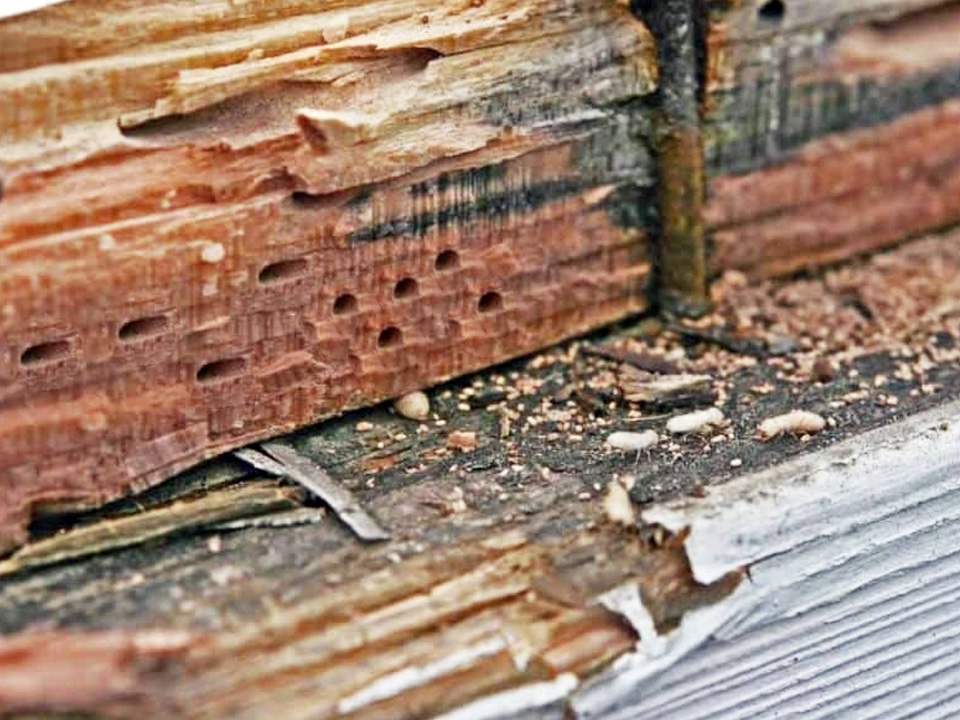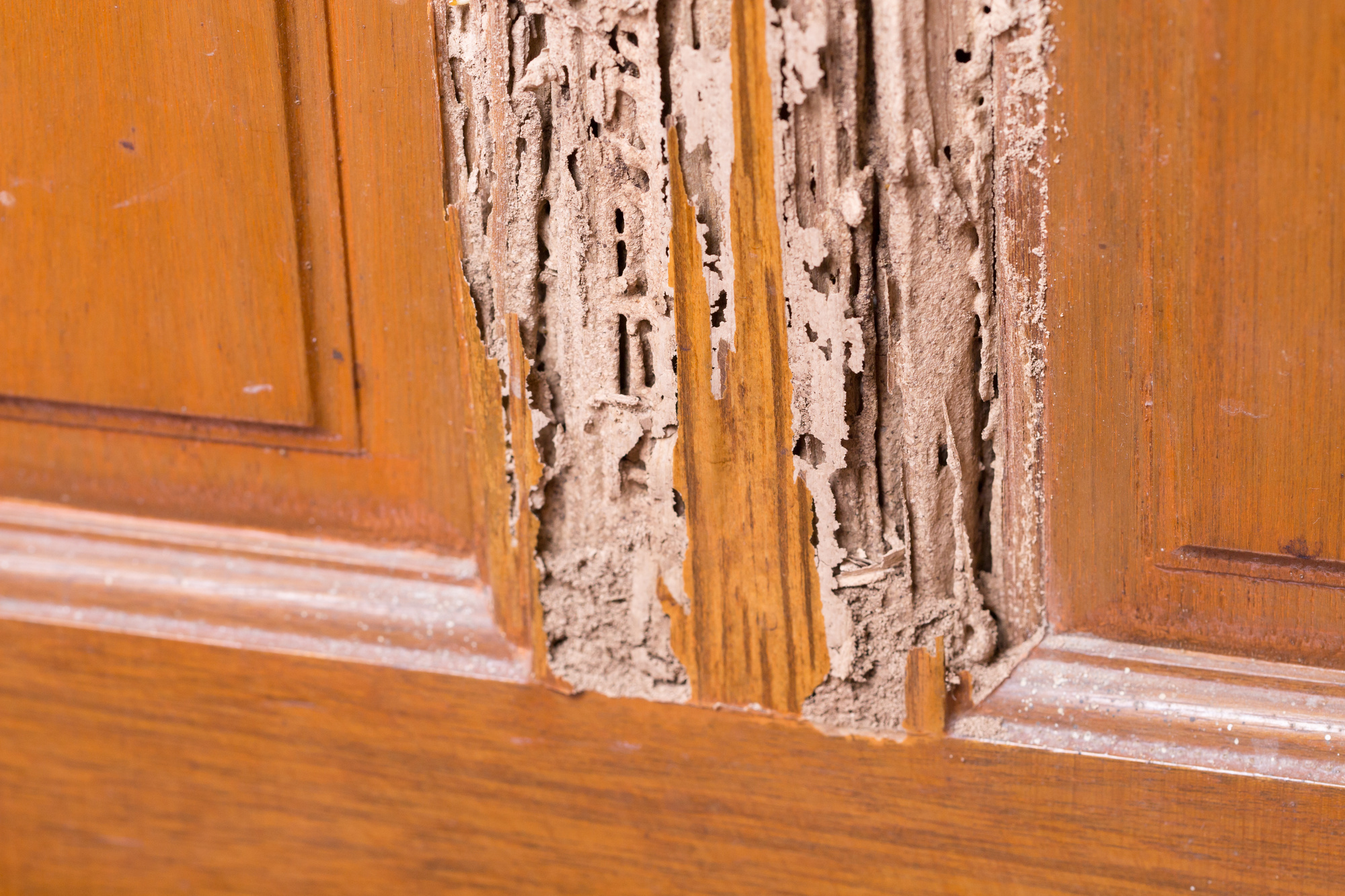No, termites are unlikely to eat treated wood compared to untreated wood. Treated wood is specially processed with chemicals that make it less appealing to termites.
Common treatments include pressure-treated wood infused with chemicals like copper compounds or borate. These chemicals act as a deterrent, making the wood less appetizing to termites and reducing the chances of an infestation.
However, it’s important to understand that treated wood is not termite-proof. Over time, the chemicals in the treated wood can break down, especially when exposed to weather conditions.
In such cases, termites may attempt to feed on the treated wood if they can’t find any other food source.
The Exploration of Termites Eating Treated Wood
Let’s address the main question: Will termites eat treated wood?
The answer is not a straightforward yes or no. It depends on the type of treatment used on the wood and the persistence of the termites.
- Treated Wood
Treated wood is specially processed to resist termite infestations. Common treatments include pressure-treated wood, which is infused with chemicals like copper compounds and borate, making it less appetizing to termites.
These chemicals act as a deterrent, preventing termites from feasting on the wood.
However, it’s essential to note that treated wood is not termite-proof. Over time, the chemicals may break down or leach out of the wood, making it vulnerable to termite attacks.
- Persistence of Termites

Termites are incredibly resourceful insects. They may attempt to nibble on treated wood if they are hungry enough and no other food source is available. This is particularly true if the treatment has deteriorated or if the termites find an entry point through an untreated area.
- Examination of Scientific Studies and Research about termites eating treated wood
So, what does science say about termites and treated wood?
Well, research has shown that termites can eat treated wood, but it’s not that simple. The effectiveness of treated wood depends on the treatment type used and the termites’ persistence.
Types of Treatment: Scientists have found that certain treatments, like pressure-treated wood infused with copper compounds or borate, can deter termites.
These chemicals make the wood less tasty to termites, reducing the chances of an infestation.
Treatment Durability: However, it’s important to note that treated wood isn’t termite-proof forever. Over time, the chemicals can break down or leach out, leaving the wood vulnerable again.
- Insights from Experts in the Field of Termite Prevention
Let’s hear from the experts – those who dedicate their careers to keeping homes termite-free.
Experts recommend the following to protect your home from termite damage:
Regular Inspections: Get your home inspected for termites regularly. Early detection of termite attacks is key to preventing extensive damage.
Moisture Control: Termites thrive in moist environments. Fix any leaks or dampness around your home to make it less appealing to them.
Termite Barriers: Consider installing physical or chemical barriers around your home’s perimeter to deter termites from entering.
Choose Wisely: When using treated wood, choose the suitable treatment for your specific needs and ensure it’s properly applied.
- Debunking the Myth that Termites Cannot Eat Treated Wood
Now, let’s bust that myth wide open!
Termites are persistent creatures. They might give it a shot if they can’t find an alternative food source and the treated wood’s protection has weakened.
This is why experts emphasize the importance of a multi-pronged approach to termite prevention. Treated wood alone won’t guarantee your safety from termite damage.
So, there you have it! Termites are indeed a formidable adversary for homeowners. While treated wood provides some protection against these destructive insects, it’s not an impenetrable shield.
Termites are persistent, and their hunger can drive them to attempt to feast on treated wood under certain conditions.
Factors Affecting Termite Resistance
A. Impact of Different Treatment Methods on Termite Resistance
First things first, let’s talk about the different ways we treat wood to fend off termites. Science has given us a few methods, each with its own level of termite resistance.
Pressure-Treated Wood: Some wood is treated with chemicals like copper compounds or borate under high pressure. This can make the wood less appetizing to termites. Think of it as a “keep out” sign for these pests.
Chemical Barriers: Sometimes, chemicals are applied directly to the soil or the wood to create a barrier. This barrier acts as a line of defense, making it harder for termites to approach your precious wood.
B. Understanding the Limitations of Treated Wood
Here’s the catch: while treated wood is like armor against termites, it’s not invincible. Understanding its limitations is key to keeping your guard up.
Durability of Treatment: Treated wood doesn’t stay termite-resistant forever. Over time, the chemicals can break down or wash away. So, it’s not a lifelong guarantee.
Termites’ Persistence: Termites are not easily discouraged. They might give it a shot if they can’t find anything else to munch on and the treated wood’s protection has worn off.
In a nutshell, treated wood is like a superhero in the battle against termites. It can deter them, but it’s not an impenetrable shield. The effectiveness of treated wood depends on the treatment method and how persistent those pesky termites are feeling.
To stay ahead in the termite game, you should:
- Choose the right treatment method for your needs.
- Ensure the treatment is applied correctly.
- Keep an eye on the condition of your treated wood over time.
Don’t solely rely on treated wood – use other prevention measures like regular inspections, moisture control, and termite barriers.
Effective Strategies for Termite Prevention

Now that you know termites can be quite sneaky, you’re probably wondering how to fortify your defenses against these wood-loving pests. Here are the methods that you can follow.
A. Alternative Building Materials that are Naturally Termite-Resistant
Concrete: One of the most termite-resistant materials out there is concrete. Termites can’t chew through it, making it an excellent choice for foundations and flooring.
Steel: Steel is another termite-proof option. It’s sturdy, doesn’t attract termites, and can be used for framing or structural support.
Composite Materials: Consider using composite materials like plastic lumber or fiber cement. These mimic the look of wood but aren’t on the termite menu.
B. Integrated Pest Management Techniques to Mitigate Termite Infestations
Integrated Pest Management (IPM) is a smart approach to keep termites in check.
Regular Inspections: Schedule routine termite inspections by professionals. They can spot early signs of infestations before they become a significant problem.
Moisture Control: Termites love moisture. Fix any leaks and ensure proper drainage around your home to make it less inviting.
Termite Barriers: Install physical or chemical barriers around your property to deter termites from entering. This adds an extra layer of protection.
Less Wood Contact: Reduce wood-to-soil contact in your home’s construction. Termites can use the ground as a bridge to reach your wooden structures.
C. Maintenance and Regular Inspection Practices for Long-Term Prevention
Seal Cracks and Gaps: Seal any cracks or gaps in your home’s foundation and walls. Termites can sneak in through tiny openings.
Remove Wood Debris: Remove your property from wood debris like fallen trees and stumps. These can be termite magnets.
Regular Checks: Inspect your wooden structures regularly. Look for signs of termite damage, including holes, mud tubes, or hollow-sounding wood.
Immediate Action: If you spot termites or signs of an infestation, don’t delay. Act promptly to address the issue before it worsens.
With these effective termite prevention strategies, you can significantly reduce the risk of termite infestations. Remember, prevention is your best defense against these persistent pests.
FAQs
Will termites eat treated wood?
No, termites are less likely to eat properly treated wood. Treated wood contains chemicals that act as a deterrent or poison to termites, making it unattractive and toxic to them.
What chemicals are used to treat wood against termites?
Common chemicals used in wood treatment against termites include borates, copper-based compounds, and synthetic pyrethroids. These chemicals create a barrier that termites find inhospitable.
How long does treated wood protection last against termites?
The protection period varies depending on the treatment method and the type of termiticide used. In general, it can last anywhere from 5 to 25 years or more.
Can termites still damage treated wood over time?
Yes, termites can still damage treated wood over time as the effectiveness of the treatment may diminish, making periodic inspections and maintenance important for long-term protection.
Is it necessary to retreat treated wood periodically?
It’s a good practice to inspect periodically and, if needed, retreat treated wood to maintain its termite resistance. Factors like exposure to moisture and environmental conditions can affect the treatment’s longevity.
Can termites tunnel around treated wood to reach untreated areas?
Yes, termites can attempt to tunnel around treated wood to reach untreated areas, but the treatment should deter and slow their progress, providing a degree of protection.
What precautions should I take when using treated wood indoors?
Treated wood is generally safe for indoor use but should be handled with care during construction. It’s essential to wear protective gear, use proper ventilation, and seal any cut edges or drilled holes to maintain the treatment’s effectiveness.
Is there an environmentally friendly option for termite-resistant wood treatment?
Yes, some environmentally friendly termite-resistant wood treatments use borates, which are considered relatively low in toxicity and less environmentally harmful than traditional chemicals.
Can termites infest structures made entirely of treated wood?
Yes, termites can infest structures made entirely of treated wood, but the likelihood and extent of infestation are considerably reduced compared to untreated wood structures.
Are there alternative materials to wood that are termite-resistant?
Yes, materials such as concrete, steel, and plastic composites are naturally termite-resistant
Conclusion
Termites have the potential to eat treated wood, although it is less likely compared to untreated wood.
Factors like the type of treatment used and how well it was applied can affect the effectiveness of treatment.
While treatment may provide some level of deterrence, it is important to remember that termites are persistent pests.
So, stay vigilant, stay proactive, and enjoy a termite-free haven for years to come!

